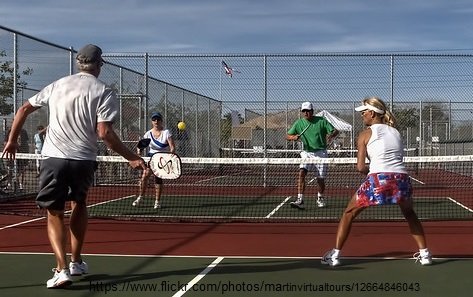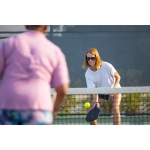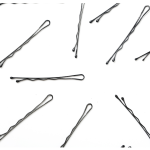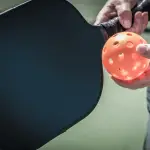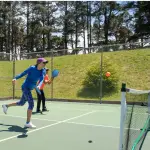Hitting down the middle is a strategy used by many Pickleball players. It can be effective for a variety of reasons. However, it is not always the right shot depending on who you are playing. Let’s take a look at the situations when you should and should not hit down the middle in Pickleball.
Communication
Since I play in a lot of drop in Pickleball my opponents change each game. This means the players on the other side of the net may not know each other well or at all. In most recreational games, the players don’t talk before the game about who takes the ball down the middle. As a result, I often employ a strategy to hit the ball down the middle to cause confusion between my two opponents.
This is especially true on serve returns where the ball may sail down the middle without either player swinging. Even after hitting a shot down the middle, the players still won’t talk about who takes this ball. This means it can still be effective at future points in the game.
Player Strength
While I hit down the middle to cause confusion, this strategy may not always be effective. For example, if one opponent is stronger than the other, he or she will take the ball down the middle. Since a common strategy in competitive situations is to hit the ball to the weaker player, hitting down the middle is not consistent with this goal.
Opponent Court Position
Even if I play against a team where one of the opponents is clearly the better player, there is a situation where hitting down the middle is an effective play. This occur if I can open a gap between the two players. By hitting a shot out wide, I can cause separation between my opponents.
As an example, I start a dink rally where I am hitting a wide shot. My opponents should be moving back and forth laterally with each other to cover the court. If one of the players is slow to move to the court position, there will be a gap between the two players. This is an ideal situation to hit the ball down the middle regardless of the skill level of my two opponents.
The opposite holds true when you have two players who are leaning toward the middle of the court. I noticed this today when playing with my friend Paul. The opponent was hitting to us down the middle a lot because he is left handed and I am right handed. We were both leaning toward the middle so our opponent hit a shot down the line. I was lucky enough to lunge for it and retrieve the down the line shot. However, it made me remember not to cheat toward the middle so much.
Right or Left Handed
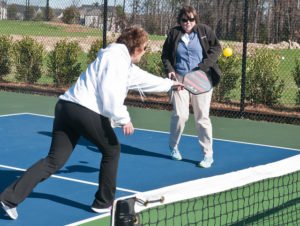
I know some players don’t pay attention to whether their opponents are right or left-handed. However, this should be one of the first things you observe about your competition. When playing a team with one right hander and the other a left hander, going down the middle when both have their backhands is usually an effective shot.
I am much more likely to stay away from returns down the middle or dinks into the middle of the court if the right-handed player is on the left. This is because both players will have their forehands in the middle so both are more likely to hit an effective shot. This isn’t always the case, but test it out and remember the result.
Mixing It Up
I realized the other day that I consistently return balls down the middle. Unfortunately, this may not always be the right play as I’ve wrote about above. My advice is to try a couple of shots down the middle and see how your opponents react. If they have trouble with communication or hit a weak return, then note this for later in the game.
Hitting every return down the middle is really too predictable. The same goes for hitting balls to the middle of the court when everyone is at the net. While this may be an effective shot, you don’t want your opponent to know this is where you are going to hit the ball each time. Make sure to mix it up and save the down the middle shots for key points in the game when you know it is a weakness for the opponent.

